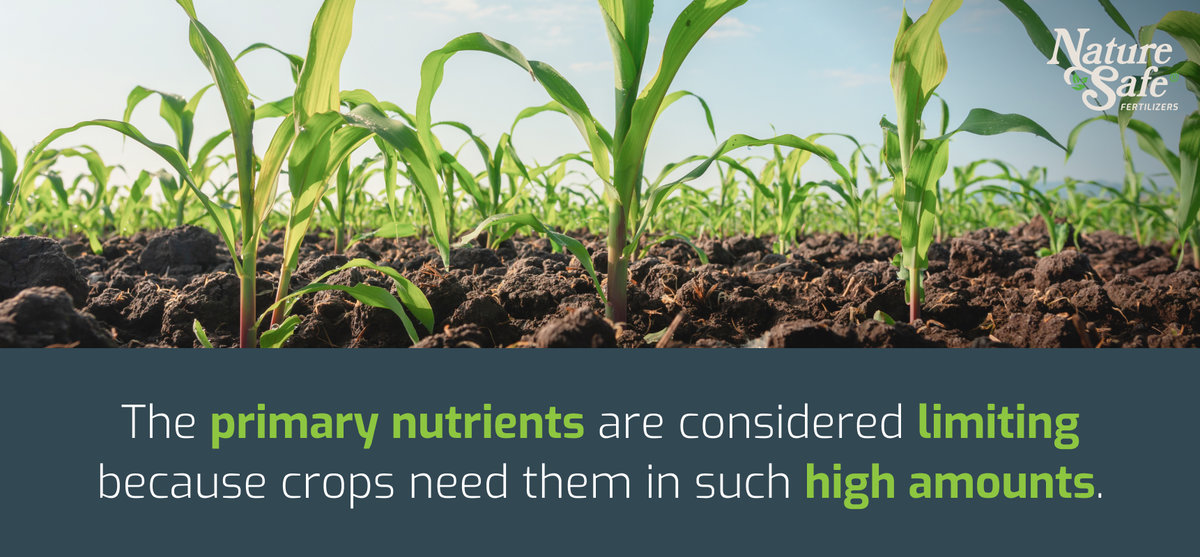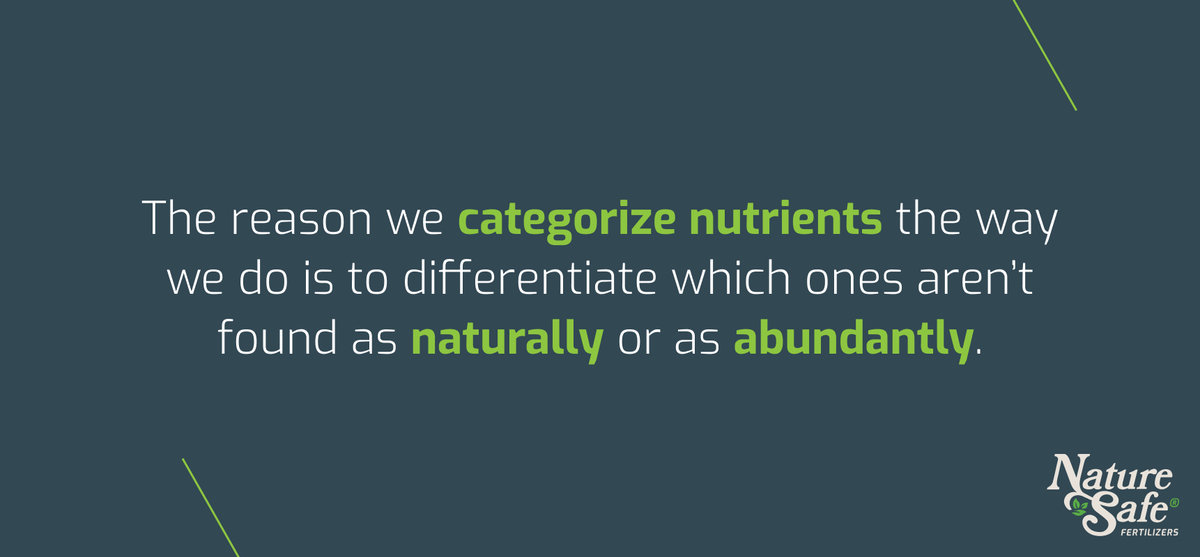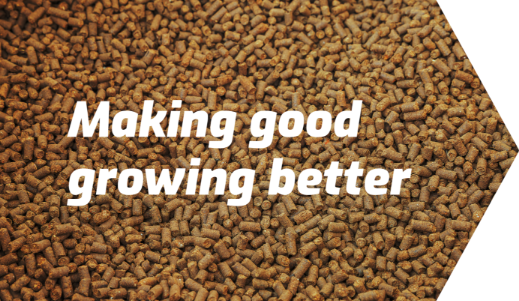
Secondary Nutrients
- Posted: Dec 22, 2023
- Author: Nature Safe Fertilizers
- Nutrients
Every grower and farmer works hard to grow healthy crops. Some things, like rainfall and sunshine, are out of our control. However, aspects like nutrition and soil health are well within our means to manipulate.
Every nutrition input and fertilizer will describe its main ingredients, often the most abundant nutrients. However, compared to the number of elements that crops use, this list falls extraordinarily short.
Sure, they’re not as easy to obtain, but these other elements shouldn’t be ignored. Each one is essential, and that includes secondary nutrients.
Primary vs. Secondary Nutrients
Describing these nutrients as primary and secondary doesn’t mean one category is more important. In the simplest terms, plants need primary nutrients in higher quantities than secondary nutrients.
Primary Nutrients Limit Crop Production
Some view primary nutrients as limiting because crops need them in such high amounts. However, you should instead consider them as “most often limiting.”
The NPK ratio listed at the top of every fertilizer bag includes the three primary ingredients:
Phosphorus
Potassium
Each of these primary nutrients plays a vital role in photosynthesis, but nitrogen does so significantly. If you provide your crops with ample nitrogen, phosphorus, and potassium but your soil health isn’t optimal, you could still end up with small, pale plants.

Secondary Aren’t As Limiting
Some sources say secondary nutrients aren’t limiting, but we recognize that they aren’t as limiting. Crops need smaller amounts of secondary nutrients. Therefore, they’re more likely to get these nutrients without significant inputs.
The three secondary nutrients are:
Calcium
Magnesium
Each nutrient plays multiple functions, but absence occurs in some more than others. Sulfur and nitrogen perform many of the same functions; both are vital in creating amino acids and chlorophyll in early growth. Magnesium is part of the equation as well, as it is central to each chlorophyll atom. Calcium aids in nutrition absorption and helps control the pH in the soil, as well as providing structure to the cell walls.
Are Secondary Nutrients and Micronutrients the Same Thing?
Plants require both secondary nutrients and micronutrients in smaller amounts than primary. However, they need micronutrients in even smaller levels than secondary nutrients. Again, every element regarding plant growth is essential, but you don’t need to supplement micronutrients.
Micronutrients
The micronutrients that crops need are:
Boron
Zinc
Manganese
Iron
Copper
Molybdenum
Chlorine
Nickel
Healthy soil generally contains enough of each of these for the crops to absorb.
All Nutrients are Essential
Once again, each nutrient, whether primary, secondary, or micro, is vital to growth. The crops will not thrive if the soil lacks zinc or iron. We categorize nutrients the way we do to differentiate which ones aren’t as natural or abundant.
For wild plants or home gardeners, being slightly low on some nutrients won’t have a huge impact. But commercial growers need to consider their profitability. It can be devastating if their crops are low quality or are too small to produce anything.
Soil tests can generally tell what you’re short on. While you might target particular elements, don’t ignore the rest. Complete nutrition is the most crucial aspect of healthy crops.

The Law Of Minimum
The Law of Minimum was first described by German scientist Carl Sprengel and popularized by Justus von Liebig in the 19th century. The law states that the most crucial nutrient for a high yield is whatever nutrient is needed. Even if others are in abundance, the one that doesn’t cross that minimum threshold limits the growth the most.
Liebig described crop yield as water in a barrel. Each stave of the barrel was something the crops needed to grow—water, sun, or any nutrient. If each nutrient is in the right amount, the stave is tall, the water stays in the barrel, and the yield remains maximized.
If one of the nutrients is low, the stave shortens, creating a spot for the water to leak out. This results in the loss of some yields. The potential for more product is lost for each nutrient or need that doesn’t meet the minimum threshold.
Law of Minimum and Secondary Nutrients
No matter what piece of the healthy growth puzzle the short stave represents, it will limit the yield. The law of minimum doesn’t just apply to the “big three” primary nutrients but the secondary nutrients as well. Just because they’re smaller amounts doesn’t mean that they don’t have an impact.
Just like humans need more protein to live than we do iron, it doesn’t mean we should disregard our iron intake completely. In fact, not consuming enough iron (or any other minerals) has significant consequences on our health.
Microorganisms and Secondary Nutrients
Crops take all of this nutrition, and they grow and produce. However, like all nutrients, these secondary nutrients don’t generally appear out of thin air. They exist in the soil.
Sulfur, one of the secondary nutrients, isn’t often bioavailable. It exists in a form the roots can’t absorb, so it must first convert to a more digestible configuration.
This conversion is a job for microbes in the soil. The endless number of microscopic organisms that live under the surface need nutrition just as much as the crops, but they consume it differently. These microbes take the nutrients and convert them into bioavailable forms.

That’s Where Nature Safe Comes In
Plant health starts with soil health. Feeding the life in the soil with these primary, secondary, and micronutrients makes the crops grow efficiently for each growing season afterward.
Organic fertilizers from Nature Safe feed the soil first so that these microbes can take charge of dispersing and converting nutrients so that the crops can absorb them.
Animal Proteins and Nutrients Availability
The animal proteins in Nature Safe pelleted fertilizers provide a complete nutritional plan. Our products high in phosphorus have a high amount of calcium as well. Slow-release formulas of bone, blood, and feather meal ensure that crops get the correct amount of primary and secondary nutrients.
Microbes and proteins perform what’s called chelation. The nutrients that aren’t bioavailable (usually present in metal forms) need to be converted into a mineral form for the plants to absorb. Not only are the nutrients ready to be used, but they’re more mobile in the soil.
Feed the Soil With Nature Safe
Nature Safe’s fertilizers focus on complete nutrition, not just the NPK ratio. Our organic and fortified organic formulations created from recycled plant and animal proteins deliver the right amount of each ingredient for each crop’s unique needs.
Reach out today to find out which of our organic fertilizers can make your good growing even better.
Thank you for reading our blog! Sign up and we’ll email the next one directly to you.
